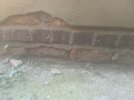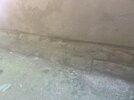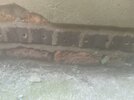- Joined
- 3 Oct 2024
- Messages
- 1
- Reaction score
- 0
- Country

So I live in a house buuikt in 1890. It’s an end terraced house down the side of the house the bottom course of bricks is very weathered and the mortar is in a bad way. The side of the house is rendered above the DPC.
There was a an injection damp proof course done before we moved in and all the holes are left open.
We have noticed damp in both the back room and front room on the between the chimney breasts. The damp is rising from the floor up.
Could the weathered bricks be causing the water to soak in? And also do I need to cover the holes.
I have put some photos on apologies for the bad quality my camera is damaged.
Also we have a leak from around our chimney in the top rooms which are in the roof. I believe the soakers have failed I need to get up to make sure though. But could these be linked?
There was a an injection damp proof course done before we moved in and all the holes are left open.
We have noticed damp in both the back room and front room on the between the chimney breasts. The damp is rising from the floor up.
Could the weathered bricks be causing the water to soak in? And also do I need to cover the holes.
I have put some photos on apologies for the bad quality my camera is damaged.
Also we have a leak from around our chimney in the top rooms which are in the roof. I believe the soakers have failed I need to get up to make sure though. But could these be linked?




